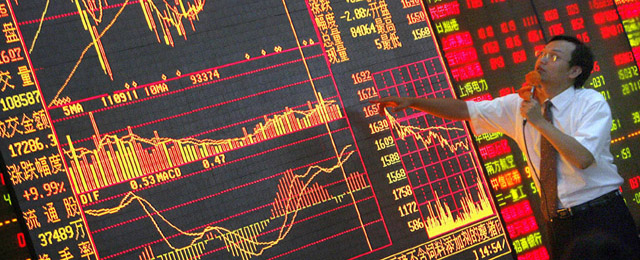Let’s try to put an end to talk of China slipping into a Japanese-style deflationary black hole today.
For starters, there’s no doubt that today’s China and late 1980s Japan have striking similarities, most notably high levels of debt, diminishing export competitiveness and an aging society.
According to Bloomberg, half of the economists in a Bloomberg News survey say non-performing local-government and corporate debt will probably have a “significant impact” on China’s credit and economic growth. The consensus of respondents, however, say the central government will deal with bad loans at local governments in the next 18 months by expanding the municipal-bond market and letting localities refinance with direct bond sales.
It is worth noting that the country’s local governments have borrowed anywhere between US$2.4 trillion and US$2.9 trillion, according to an estimate by the deputy head of the National Audit Office. That’s more than the GDP of France.
“The debt ratio is absolutely dangerous, there is no question,” said Yao Wei, China economist at Societe Generale SA in Hong Kong, but the situation is “actually not so scary if you take the size of state-owned assets into consideration,” said Hu Yifan, chief economist at Haitong International Securities Group in Hong Kong. Yu Yongding, a former central bank adviser, estimated the assets’ value at US$16.4 trillion, about double GDP.
“China’s controls on domestic deposit rates and on international capital flows also reduce the chances of a short-term debt crisis,” said Andy Mukherjee, a Reuters economics columnist. “That gives the leadership some breathing room to sort out its problems.”
Turning to trade, China’s economic growth has long been driven by exports. The shift towards domestic consumption will not be easy to pull off, but China seems determined to make the necessary changes, even at the expense of much slower growth.
“Even if GDP growth declines but average Chinese household income grows at 5% to 6% a year, it would put China in the right direction,” said Michael Pettis, professor of finance at Peking University.
As a bonus, manufacturing industries around the world that lost out to China in the export business over the years will benefit, noted Pettis. “When wages rise for Chinese workers—so that they have more money to buy goods and services at home—it means other developing countries will have a chance to compete for exports if they offer lower labor wages.”
China will have a tougher time defusing its aging “time bomb.”
Japan’s old-age dependency, or the ratio of the elderly to those of working age, was 17 percent in 1989, and the figure doubled over the next two decades, according to Reuters. In China, the ratio is currently lower at 12 percent, but Beijing’s one-child policy means the country will age at a faster rate—reaching 42 percent in 2050, according to projections from the United Nations. China currently has more than 185 million citizens over the age of 60.
The prospects are bleak, not only for the elderly, who are poor, sick and depressed in alarming numbers, but an immense challenge for Beijing and one of the greatest long-term vulnerabilities of the Chinese economy, said the Wall Street Journal.
Of the generation that built China’s economic boom, 22.9 percent—or 42.4 million—live in poverty with consumption of less than US$522 a year, according to WSJ. The fear of being old and poor, which prompts many Chinese to stash away their earnings, also undermines China’s attempt to rebalance the economy toward stronger consumption.
To be sure, Beijing is making moves to expand its welfare system, but it remains woefully inadequate. On average, pensioners receive just US$118 a year.
The problem of dealing with China’s aged notwithstanding, China’s economy is nowhere near collapse.
Pettis summarizes the current situation best by saying that “a financial collapse is effectively a kind of bank run, and as long as government credibility remains high, banks are guaranteed and capital controls are maintained, it is unlikely that China will experience anything like a bank run.”
Premier Li Keqiang, an economist by training, served up his position in a Financial Times op-ed on Monday: “Observers ask whether China’s economic slowdown will lead to a sharp decline—or even a hard landing—and whether our reform programme will be derailed by complex social problems. My answer is that our economy will maintain its sustained and healthy growth and China will stay on the path of reform and opening up.”
China’s most recent economic indicators are with Li, leaving no doubt that the Chinese economy has rebounded after a shaky half-year.
The national statistics bureau said on Tuesday that industrial output grew 10.4 percent year-on-year in August, up from a 9.7 percent pace in July and beating market forecasts. Retail sales were up 13.4 percent year-on-year, accelerating from 13.2 percent growth in July. Fixed-asset investment, expressed in year-to-date terms, rose 20.3 percent in August, up from 20.1 percent in July, according to CNN.
*Image by Scott Greene.






i´m desagree, sorry